Why does the Decembrist not bloom at home and what to do to make it bloom?
Many gardeners collect different varieties Decembrist or as it is called in another way Schlumberger. But when growing a plant, already at a fairly adult age, the shrub abruptly stops forming buds and blooming.
To identify the reasons that served as a factor for the development of such a condition, you should carefully consider the green pet. Perhaps the reason for the lack of flowering is pathogenic bacteria, invasion of pests or non-compliance with simple rules for caring for the plant.
Content:
- Features of the structure of the Decembrist
- The Decembrist does not bloom - the reason: improper care
- How to properly care for a plant?
- Decembrist does not bloom - reason: disease
- How to cure a plant?
- Decembrist does not bloom - reason: pests
- What to do, how to get rid of them?
Features of the structure of the Decembrist
Decembrist got its name from the lush bloom that falls on New Year's Eve in December. The plant is an epiphytic type cactus. Its main preferences are growing on the bark of other plants. This preference for the shrub is vaguely reminiscent of the cultivation of orchids.
The bush is safely placed on another plant, releases its rhizomes into the bark of a neighbor and is actively saturated with its juices. Such cultivation of the Decembrist is common in his historical homeland in Brazil and its tropical forests. In Russia, such conditions are not provided for the Decembrist, so he adapted to survive in the ground.
Schlumberger, unlike its closest relatives - cacti, does not tolerate high temperatures, bright direct sunlight and requires a large amount of nutritious moisture.
Features of the structure of the plant:
- The plant has branched stems that consist of numerous flat plates. Each of the leaves is an oblong leaf with several notches at the end. Each subsequent segment grows from the core of the previous segment. Branches can grow up to 30-45 cm in length.
- The plant's rhizomes are weak, die off quickly, but due to the large volume of rooted segments and when favorable conditions are created, they quickly grow again. In addition, the plant has air roots that feed the plant from the air, and, if necessary, root perfectly.
- The flowering of the Decembrist is interesting, specific. The inflorescence is endowed with several long tiers of a tubular flower. The buds form on the lower segments in the core and gradually develop. Inside the inflorescence there is a bunch of interesting stamens hanging in bulk from the center.
Usually the flower is endowed with a pink tint or white tone. But the long and hard work of breeders was not in vain, and various types of Schlumberger appeared in large numbers, represented by original colors: peach, scarlet, purple, yellow and many other tones.
The Decembrist does not bloom - the reason: improper care
When grown at home, many growers complain about the lack of flowering. A flower can once show the originality of flowering and no longer please the owner with an abundance of flowers. In order for the plant to begin to bloom, you need to make sure that all the conditions for caring for the shrub are fully met.
The following reasons are highlighted, because of which the Decembrist may not bloom:
- Frequent change of location - the Decembrist does not like permutations. He needs to choose the best place, specially select a window sill on which he will feel comfortable. A single movement from side to side or along its axis can provoke a drop of buds.
- Lack of sunlight - if you install the shrub in direct sunlight, then, with a high probability, large burn spots will appear on the segments. But at the same time, if you install the bush in a shaded place, then the lack of sunlight will serve as a factor for the lack of bud formation.
- A transplant is required - the Decembrist is recommended to be transplanted annually. This is due to the fact that the plant manages to thoroughly deplete the soil in a year. Therefore, a lack of nutrients in a depleted land leads to a lack of budding.
- Lack of fertilizers - if the Decembrist is transplanted on time, installed in a suitable place, watered well, but still does not bloom, it is recommended to feed it with a complex fertilizer. Top dressing should be considered depending on the season. If nutrients are introduced incorrectly or at the wrong time, the plant will release buds, but will not bloom, gradually dropping all unopened inflorescences.
- Inappropriate watering - Schlumberger belongs to the genus of cactus, therefore, it is very much in need of specific watering. Lack of nutritious moisture, or, conversely, its absence, negatively affects the shrub and its root system.
- Problems with the root system - with excessive watering, the soil is saturated with moisture. This condition adversely affects the delicate roots of the bush, leading to the development of rot or other fungal diseases. In addition, pests that have appeared in the soil negatively affect the state of the ground part of the flower, provoking its drying out and complete death.
Before purchasing a Decembrist, it is recommended that you familiarize yourself not only with its beautiful flowering, but also with the proper care of the shrub.
How to properly care for a plant?
High-quality care for the Decembrist is the key to excellent and long-lasting flowering. To get a pink or white miracle on your windowsill in December, you need to follow simple rules for caring for a plant throughout the year:
- Location - in natural conditions, the bush is located in tropical forests, while the sun's rays fall on it in sufficient volume, but at the same time it is covered from the bright midday sun. Therefore, it is required to recreate the optimal living conditions at home. To make the bush feel comfortable, it is worth installing it on the east or west window. With such an arrangement, in the first half of the day, the bright sun will fall on it, but not scorching, and at noon the sun will safely move to the south side.
- Watering - nutrient moisture should be injected in a moderate amount, but the soil should not be allowed to dry out, this can provoke drying of the root system and its death. It is recommended to adhere to such irrigation conditions - so that the soil substrate is always slightly moist, but does not turn into swampy contents.
- Humidity - in the summer it is recommended to periodically wash the segments of the shrub, this will eliminate the settled dust from the leaves and open the stomata for the respiratory process of the plant. Spraying is mandatory. The process will increase the humidity in the room and bring home conditions closer to natural ones.
- Fertilizers - the ideal option would be mineral dressing for succulents or cacti. To prevent oversaturation of the plant, it is recommended to dilute the fertilizer with water in a ratio of 1: 2 before use.
- Content temperature - the succulent feels best at a temperature of +16 .. + 25 C. Before the budding period, it is recommended to lower the degrees in the room to +10 .. + 16 C;
- Soil - it is recommended to choose a soil substrate for planting a plant in a flowerpot. It can be purchased from a specialty cactus or succulent store, or you can make your own. To do this, you will need leafy earth, sod and river sand of a coarse fraction. Be sure to place a broken brick or perlite at the bottom of the flowerpot. Such an addition is required to eliminate the possibility of excess moisture stagnation.
The Decembrist does not require any specific or unfeasible conditions for leaving. Systematic implementation of the recommendations will allow you to enjoy the active flowering of the beautiful Schlumberger for a long time in the new year.
Decembrist does not bloom - reason: disease
Improper care provokes the development of various diseases. Therefore, if there is no flowering, it is worth paying attention to the general condition of the pet, there is a possibility of developing diseases, both on the leaf plates and in the root system of the bush.
The following problems with the plant are distinguished:
- Fusarium is the most common fungal disease among the Decembrists. Primarily, the infection begins to develop on the rhizomes of the plant. The areas where the problem is located turn orange, may lighten and dry out completely. The carrot tone is inherent in spores located on rhizomes, therefore, they are often noticeable in the foci of location, especially with a significant accumulation. If the disease is not noticed for a long time, the affected roots die off completely.
- Rot of cladodes is the causative agent of the problem: a specific type of fungal bacteria. There are no vivid symptoms. The only moment that signals the development of the disease is the appearance of painful areas on the leaf plates of black or other dark tones. Such places are depressed when viewed. The diameter of this darkening can be up to 1 cm in diameter.
- Late blight - when a problem occurs, the leaf plates become dull, lifeless, a gray-green tone appears. With a prolonged course of the disease, the leaves begin to wither and dry out completely. In some cases, the stem and root system rot at the same time. Lack of emergency treatment will result in the loss of the entire bush.
- Soft rot - it is provoked by pathogenic bacteria that secrete their waste products, endowed with toxic substances. A distinctive feature is the appearance of moist areas of a dark shade, which tend to form near the base of the plant. When this kind of darkening is detected, the plant quickly takes on a painful appearance and completely dies.
If he does not notice the unfavorable state of the plant in time, then the exotic flower can be lost. Any malaise of the bush should be controlled and, if necessary, the therapeutic effect should be started immediately.
How to cure a plant?
To get rid of a fungal disease, it is recommended to use chemical preparations - fungicides different spectrum of action. It is best to use means of systemic exposure to the affected plant. They are able to be absorbed by the root system of the Decembrist and gradually enter the leaf plates. Such means of combating diseases include Fundazol. In addition, contact fungicides that reveal a positive effect are: Fitosporin, Bordeaux mixture.
To eliminate diseases provoked by bacterial pathogenic bacteria, the treatment is identical. When treating an infected plant, it is important to remove it from the entire collection of flowers.This is necessary to prevent pathogenic bacteria from spreading to healthy flowers, thereby infecting a large number of plants.
During the therapeutic effect, the living conditions and growing of the flower should be reviewed.
Be sure to give the shrub an abundance of sunlight and dry the soil. If necessary, if the plant rhizomes are affected, the flower should be dug out, the root system should be carefully examined, the affected areas should be removed and a fresh cut should be processed. ash or activated carbon. The old soil should be removed, and the plant should be placed in new soil, pre-fried in the oven and spilled with a weak potassium permanganate solution to neutralize the remaining pathogenic bacteria.
Decembrist does not bloom - reason: pests
In most cases, the Decembrists are not exposed to the invasion of harmful insects, but in some situations, acquaintance with parasites cannot be avoided.
The main pests that most often settle on deciduous plates are the following insects:
- Mealybug - it tends to be located in the sinuses of the leaf plates. Its presence is indicated by the appearance of a small size of white cotton balls, well treated with sticky mucus. The parasite is a fluke, feeding on the sap of leaf plates and stems, sucking out all the nutrients from them.
- The scale insect is a parasite that is located on Schlumberger, does not reveal large sizes. Its diameter is only 5 mm, but this miniature insect is capable of destroying an entire shrub. When these parasites appear, the Decembrist begins to wither, he has yellowish leaf plates. If untreated, the plant dies.
- Spider mite - a tick that appears on the leaves of a bush has an orange or reddish color. In most cases, the pest is located on the lower part of the leaf plate and from there moves to the entire territory of the flower. Its presence is signaled by the appearance of a whitish cobweb and white dots on the surface of the leaf.
If the parasites are not detected in time, then their invasion increases to a significant size, which will be difficult to remove with the help of folk remedies.
What to do, how to get rid of them?
When parasites appear on the leaf plates, they should be immediately neutralized. Otherwise, there is a chance not only to get a non-viable plant, but also to infect other shrubs nearby.
If you react in time to the appearance of pests on a flower, then insects can be eliminated mechanically. For this, the identified insect is neutralized manually. With a large population of pests, you can try to influence the flower with folk remedies. For this, infusion on tobacco, garlic, soap-ash, tincture of horsetail, or oil spraying with a spray bottle is suitable.
With a massive increase in the number of pathogenic parasites, alternative methods do not work, it is recommended to resort to therapy with chemicals:
- To eliminate the spider mite, spraying the plant with Aktofit, Vertimek or Fitoverm is perfect.
- Mealybug quickly dies under the influence of Aktara or Confidora.
- The scale insect, like the mealybug, is sensitive to Confidor. Also, to eliminate parasites, it is recommended to dip a cotton pad into the Karbofos solution and gently wipe all segments of the Decembrist. If Karbofos is hard to find, Tanrek is a good substitute.
It is best to observe an indoor exotic pet and start treatment as soon as the first signs and signals of a pest invasion appear.
Thus, the Decembrist is an original plant that requires specific conditions with its content, especially placement. Therefore, if the shrub does not bloom or releases and drops buds, you need to look into the flower and identify the cause of the malaise and lack of flowering.
More information can be found in the video:




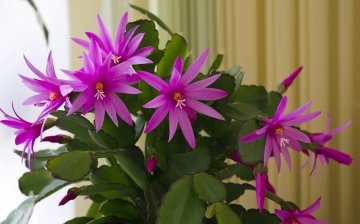
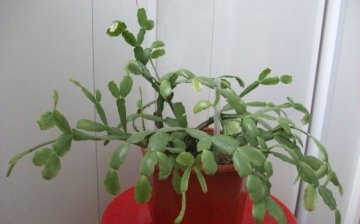
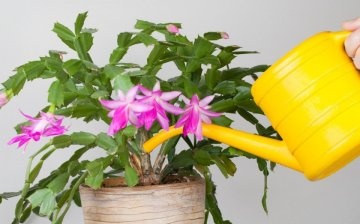


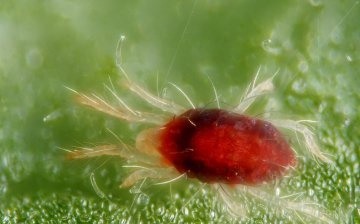
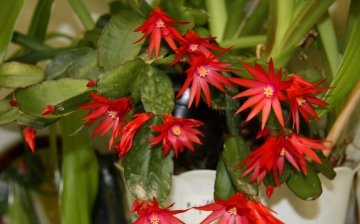








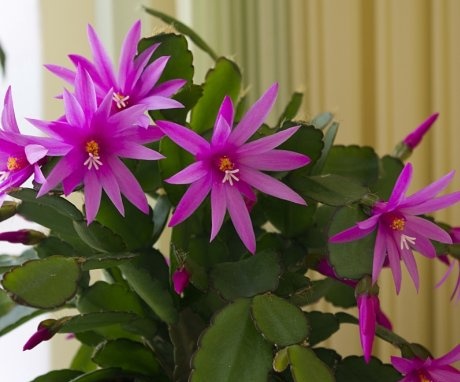
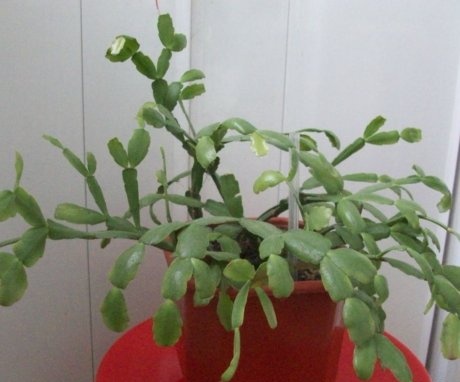
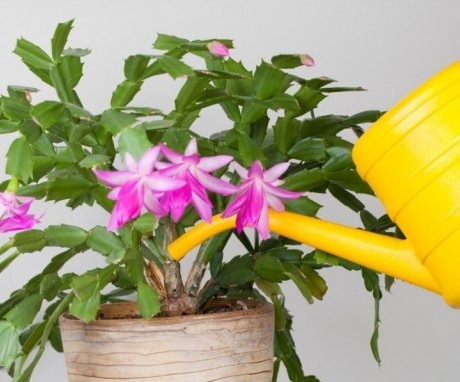
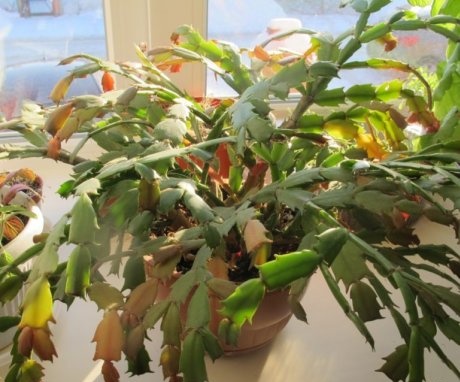
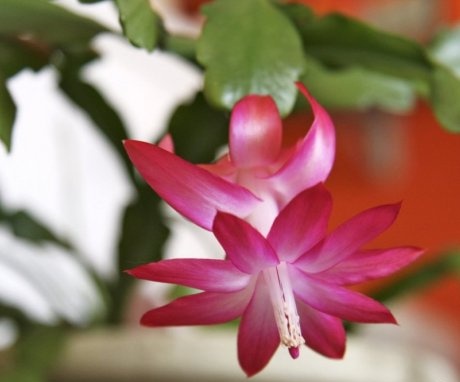
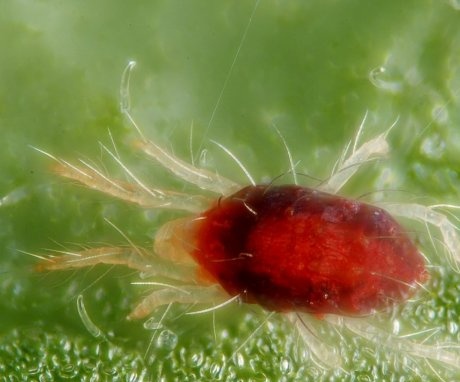
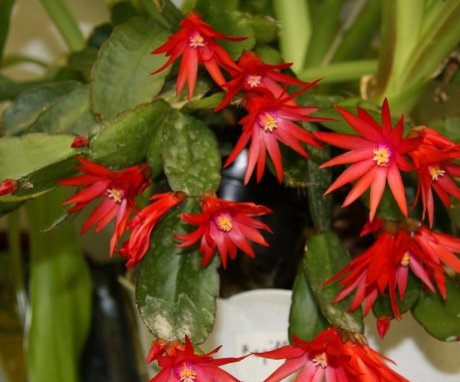
Our Decembrist has already bloomed this year, and, on the bush, there were only a few flowers. This flower does not like various permutations, that's why it blooms badly this year.
Our Decembrist has already bloomed this year, and, on the bush, there were only a few flowers. This plant does not like various permutations, that's why it blooms very badly this year.